Why it pays to review your touring caravan insurance each year

Most caravan owners renew their insurance without giving it much thought. It’s understandable – life gets busy, and if you’ve had no issues with your cover, it’s easy to let the policy roll over for another year.
But reviewing your touring caravan insurance regularly may make a noticeable difference to both your protection and your pocket. A small amount of time spent checking the detail can help avoid gaps in cover, unnecessary add-ons, and even potential claim problems further down the line.
Here’s why an annual touring caravan insurance review matters – and how to check your policy in a way that genuinely saves you money.
Your caravan’s value may have changed
Caravans don’t hold the same value forever. Prices can shift because of age, condition, demand, or upgrades you’ve carried out. This matters because insurers rely on the value you give them to calculate your premium and, crucially, to settle claims.
If the value you declared years ago is now too low, you could be underinsured. In practice, that means you may not receive enough to repair or replace your caravan after a major incident.
A quick check against current sales listings, dealer valuations, or manufacturer price guides will help you keep this accurate.
Have you added anything that affects cover?
Many caravan owners upgrade their tourer over time – new security devices, a motor mover, solar panels, or upgraded furnishings. These additions can affect both the value of your caravan and the policy conditions.
Similarly, if you’ve bought a new awning, added accessories or replaced damaged furnishings, these could affect your contents or equipment cover. Listing everything correctly ensures you’re covered if the worst happens.
Are your storage and usage details still right?
Changes to how you store or use your caravan can also affect your insurance. Perhaps you’ve moved house, switched to a different storage yard, or now use the caravan more (or less) frequently. Maybe you’re planning continental trips that your original policy didn’t include.
If you store your caravan at a CaSSOA-rated site, for example, some insurers apply premium discounts (at Cover4Caravans, we offer discounts up to 20% for tourers stored on a CaSSOA-approved site). Conversely, if your storage arrangements have changed in a way that increases risk, failing to update your insurer could complicate claims.
These two blogs may provide useful: Guide to Caravan Storage and Security and Important message to our customers regarding caravan storage.
Usage matters too. Occasional UK trips, regular European touring, seasonal pitches, rallies – each may have different implications in a policy. A quick review keeps everything aligned and reduces any risk of accidental non-disclosure.
Check what you’re paying for
Many people inherit add-ons over the years without realising it. Items like key cover, recovery cover, awning protection, or increased contents limits may no longer be needed. Equally, you might find that a previously optional extra is now more useful than ever.
Reviewing these add-ons is often where the easiest savings are found. Strip back what no longer suits your touring style, and add in what genuinely protects you.
At the same time, check your policy excess. This is the first part of any successful claim that you are financially liable for. Increasing it slightly can reduce your premium, and for some owners it’s a simple way to save money without affecting essential protection.
Small checks that can bring down your premium
There are several practical steps owners can take to keep costs sensible:
- check you have the correct security devices required under your policy;
- store the caravan at a secure site if possible;
- keep your caravan well maintained – insurers look more favourably on well-cared-for tourers;
- review your contents list and remove old or unused items to avoid unnecessary cover;
- make sure tyres, brakes and chassis are in good order – preventing avoidable claims keeps long-term premiums stable.
These small steps show insurers you are a lower-risk owner, which can help keep your premium competitive over time.
Why a regular review brings peace of mind, too
Touring caravans are a major investment, and using one comes with its own set of risks – storage, towing, weather, theft and accidental damage being the main ones.
By reviewing your touring caravan insurance once a year, you’re ensuring that your protection keeps pace with your current situation, not the one you were in several years ago.
It also means you can be confident that if something does go wrong, your policy will respond exactly as you expect.
Need help reviewing your cover?
If you’re unsure where to start or want to check that your policy still suits your needs, the Cover4Caravans team is here to help. Call us on 01702 606301 and we’ll be happy to talk through your existing cover and help you find the most cost-effective and appropriate protection for the year ahead.
Abbey Wood CAMC – Site Review
Date of Visit: October 2025
Overall View
This is a full facilities CAMC site located on the Eastern side of London. For access please see arrival video HERE. The site is in the ULEZ zone and charges may be payable.

Following the closure of Crystal Palace Club site – the extensive transport network and facilities made this site’s location appealing.
We found the site to be very quiet both during the day and always at night. There is some aircraft noise as it is on the flightpath for Heathrow Airport – this was not at night and as planes are still quite high up at this distance, it is not excessively noisy.
Facilities
There are two full facility amenities blocks which have both male/female and accessible toilets/showers. In addition there are laundry rooms and dishwashing areas in each block. There is also a toilet only block at the top of the site itself.
There is a Reception Room and an Information Room alongside. The site also has a small storage area for caravans and motorhomes. A late night arrivals area is at the entrance of the site before the large security gate which is closed between 22.00 and 08:00. As a result, staying on site feels very secure. The normal barrier/keycard is in operation during the rest of the time and pedestrian access is allowed day and night.
There is a small children’s play area in the middle of the site.
A pizza truck normally visits twice a week, orders taken in advance.
Review of Site Pitch
The site has pitches of every type offered by the Club up to and including fully serviced pitches. There are also a number of hardstanding and non-awning pitches approaching Reception. There is a tent area too.
We were on a hard-standing and non-awning pitch on the road by Reception. It should be noted that these are not very long and we only just managed to get the van off the roadway and still be able to access the drainage pipes which are to the rear of the van in this case. If you wish to have a little more room and be off the roadway, best to pick an awning pitch.
You will need to use ramps and blocks for a good number of pitches, of all types throughout the site as the site as a whole is on a slope.

Water and CDP points are dotted throughout the site meaning you do not have to walk far from any pitch. Many of the CDP points are newly shielded by wooden fencing. At the moment, rubbish disposal and recycling points are still located throughout the site.
Both TV and radio reception were good and all the mobile network operators indicated 4G coverage with O2 adding 5G coverage outdoors. Our personal experience with EE and Three was good.
Around and about
For those people visiting London for the first time, you would be best advised to have a look at www.visitlondon.com
In this review, we will concentrate on the immediate surrounding area and the site’s many transport links.
The nearest railway station is Abbey Wood which is both one terminus of the Elizabeth Line and also part of the National Rail network which goes to Gravesend in an easterly direction. Elizabeth Line trains are frequent and go towards Reading and Heathrow Airport in the West after crossing Central London. Links with the Northern Line underground take you to Euston Station, from the Tottenham Court Road underground station. www.tfl.org.uk

You could also use the mainline service from Southeastern to travel to London Bridge and change for Charing Cross.
The station is a 10-minute walk downhill from the site – conversely on your return an uphill walk is in store! There is a bus which drops you off, one block from the site, no. 180 and leaves from opposite the station, as part of your TfL daily cap. There is also a taxi rank underneath the station and both traditional black cabs and pre-booked Uber taxis are available. You should expect to pay between £5-£6 for the journey – we found it a small price to pay after a long day out.
From the same bus stop as you get off from the station, it is possible to catch the bus as far as North Greenwich and then catch the Uber boat into London. Please note that this is not part of the TfL daily cap but offers an alternative and pleasant way of getting into central London. There is a 10 minute level walk from the bus station to the boat pier – plenty of seating opportunities on the way. We found the signposting to be somewhat lacking and relied on Google Maps to direct us.
Locally, there is a small parade of shops including a convenience store however, we opted to move about 500 yards to the other side of the station and use the full sized Sainsburys Superstore – this has a Costa cafe and is totally accessible. We enjoyed a coffee whilst waiting for the store to open at 11am on a Sunday – the full length glass windows affording us quite a view of the area as it is all on the first floor. It was interesting to see how much development is going on – obviously, the impact of the Elizabeth Line – the area is very much on the up. There is also another 180 bus stop opposite this entrance – useful if you have a fair bit of shopping.
One of the nearest parks to visit is Lesnes Abbey Woods, an 88 hectare site of ancient woodlands, park and a ruined abbey. www.lesnesabbeywoods.org/
This is part of the Green Chain Walk, 50 miles, split into 11 sections stretching from the River Thames to Nunhead Cemetery.
Another close by attraction is the Crossness Steam Pumping Station. Following the realisation by prominent scientists of the 19th century, that there was a link between ill health and poor sanitation, Crossness Pumping station was built by Victorian Engineers as a sewage treatment works. Now, long since ceased to be operational, there is an opportunity to view Victorian engineering at its best. It is not open every day, please check their website before setting out. On running days there is an old fashioned red Routemaster bus which runs between Abbey Woods railway station and the site. Pre-booking is essential. The tiled decoration in the main hall is a true testament to Victorian engineering of the day. www.crossness.org.uk
Summary
A very pleasant little green oasis inside the M25 with good access to Central London offer the caravanner a great option. The site was pretty full the whole time we were there – which was October half-term. The older toilet block is in need of some updating and we understand that work is in hand. Very friendly and helpful wardens on site. Overall, a great holiday and we will return.

Caravanning for adrenaline junkies – where to go and where to pitch-up in the UK
Updated December 2025
Contents
Introduction
One of the great things about the British Isles is that they are about a whole lot more than historic monuments, castles, ruins and the tranquillity of some rural idyll – there is also a mountain of adventures and activities throughout the country.
Some of the best spots for activities – whether extreme or otherwise – might be almost on your own doorstep, whilst others might be in new and untravelled corners of these islands.
When visiting the latter in particular and with tired and aching bones, one of the last things you are likely to want is the long slog home or the prospect of roughing it on some windswept mountainside.
If you take your caravan with you, of course, you are always assured of a warm and comfy home from home, where you can rest a while, get a good night’s sleep – and launch off into your next round of wild activities in the morning.
What is more, and however remote a corner your thirst for adventure might take you, you are likely to be surprised by just how many well-organised and well-appointed caravan sites are right next door or a short drive away at most.
Combining some of the best adventure activities and sports which the British Isles have to offer with the freedom and ever-present comfort of a touring caravan to return to at nights might be all that you need for a well-earned weekend break or the holiday you have been promising yourself for some time.
In this brief guide, the aim is to introduce you to some of the locations where you can indulge a hankering for more adventurous activities – and where you will find a handily placed site for your caravan at the end of the day.
Please note that the information provided is correct at the time of writing, but some activities or facilities may change or be withdrawn, so please always check directly with the provider before booking.
Scotland
Even if you have never been there, Scotland conjures up pictures of breath-taking mountain scenery, rugged and windswept moorland, and fast-flowing white water – all the ingredients for some adrenaline-pumped action set amongst spectacular scenery. Here are just a few examples.
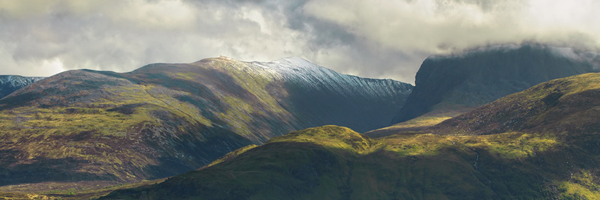
Just the term “canyoning” might give you some idea of the thrills and spills this activity might bring. Imagine doing it down the sides of Britain’s highest mountain and the excitement is bound to rise still further – wild swimming, cliff jumping, abseiling, sliding down natural water flumes, and scrambling beneath waterfalls are all activities you are likely to find memorable to say the least.
Where to stay
- Glen Nevis Caravan & Camping Park, a 30-acre site, with fantastic views of majestic Ben Nevis right from the door of your caravan. It is in Fort William, one of the principal access points for Ben Nevis itself and its four fields offer 40 fully serviced (electricity, water and drainage) pitches for caravans and a further 150 pitches which are partially serviced (electricity only);
- Glencoe Mountain has 10 microlodges, 4 microlodge plus, 6 camper/caravan hook-up points, 30 camping plots, showers (£1 for 5 mins), drying rooms and an onsite café with a fully licensed bar. Not only is the scenery stunning you can enjoy hill walking and mountain biking in the summer and, for the hardier types sledging in the depths of winter.
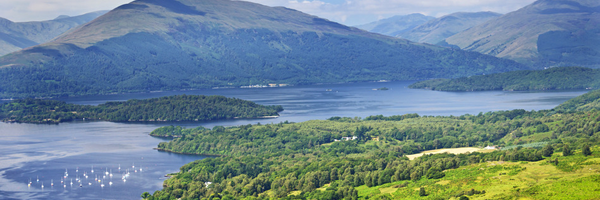
Lots of activities including water sports and quad biking are listed by Action Adventure Activities at its centre just to the east of Loch Lomond, 23 miles from the centre of Glasgow and roughly an hour’s drive away from Edinburgh.
Where to stay
- Cashel Campsite situated on the eastern shore of Loch Lomond, the campsite offers a peaceful and tranquil setting that is only a few miles from all the activity at Gartmore. The site offers pitches for tents, motorhomes and caravans with some also offering fully serviced hard standings;
- Keltie Bridge Caravan Park is within the beautiful Loch Lomond and Trossachs National Park, near the town of Callander and, so, a short drive from the activity centre at Gartmore. The site offers a total of 75 pitches for caravans, all of which are on level ground and some of which are fully serviced;
- Lomond Woods Holiday Park, as the name suggests, caters for those looking to rent a more permanent holiday home, but there are also pitches for a number of touring caravans. The latter are all on hard standing, with some offering electricity hookup, water, drainage and digital TV connection, whilst others offer electricity hookup only.
The name says it all really – no limits to the thrills and spills on offer from this activity centre, located near the southern boundary of the Cairngorms National Park, just three miles south of Pitlochry and about an hour’s drive away, therefore, from either Glasgow or Edinburgh.
On offer is a whole raft of white water based activities to get the adrenaline pumping. There is even a section for younger adventurists – appropriately called Wee Limits.
Where to stay
- In Pitlochry itself you will find the Milton of Fonab Caravan Park, a peaceful family-run site with both static holiday homes for rent and pitches for touring caravans. It is the holder of an AA Campsite of the Year award. This large park has pitches for up to 170 caravans and tents, all with electric hookup;
- Faskally Woods Holiday Park is similarly close to all the activities based at Nae Limits, since it is also in Pitlochry, on the banks of the River Garry. The site advertises “plenty” of pitches for caravans, all of which have electricity hookup;
- Aberfeldy Caravan Park is less than 10 miles away, situated on the banks of the famous River Tay. As a retreat from the day’s exertions at Nae Limits, you are likely to find the park both restful and quiet, with stunning views over the river. 133 pitches for touring caravans and motorhomes are available, all with electric hookup.
Northern Ireland
Northern Ireland is no stranger to adventure activities, many of which are headlined in one helpful guide, Outdoor Activities in Northern Ireland.

“Open” canoeing, kayaking and mountain biking are some of the activities you might want to try out in the stunning setting of the Castlewellan Forest Park, just an 11 minute drive north of Newcastle – and the same distance from Dundrum – in County Down.
There are beginner level courses and those to suit more advanced adventurers – of whatever age.
Where to stay
- Windsor Holiday Park is a short walk from the seaside town of Newcastle. Although the park concentrates on the rental of static holiday homes, there are also pitches for a number of touring caravans, on grass, but each with an electrical hookup;
- Strangford Holiday Park is on the shores of Lough Strangford and a dozen or so miles to the east of Castlewellan, ideal for further exploration of the Ards Peninsula and the iconic Mountains of Mourne. Once again, the park concentrates on static holiday homes, but also offers a number of pitches for touring caravans, all of which are on hardstanding with electricity hook-ups, water and drainage points.
Wales
“How Green Was My Valley” is the title of a nostalgic look back at the life and times of growing up in Wales. The valley almost certainly had a river running through it, but these days any hint of white water is going to attract those with the thrills and spills of adventure activities in mind.
Whether your adrenaline fix is best met by white water or any number of other activities, Wales may be certain to come up with many locations worth considering.
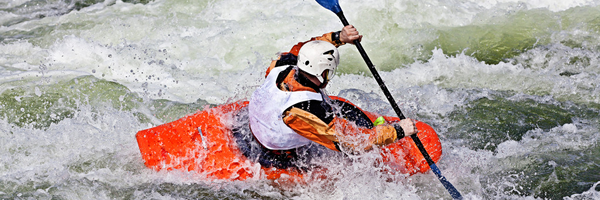
Adventures Wales, near Cardiff
It is only a few miles from the Welsh capital of Cardiff, yet Adventure Wales offer white water rafting on the completely wild and natural rivers Usk, Wye and Rhondda. Travel to the relevant river head by minibus and career down its course in specially constructed white water rafts guided by experienced professionals.
Although the centre offers one of the only year round white water rafting courses in Wales, low river condition might mean a last-minute switch to equally exhilarating gorge walking.
Where to stay
- Cardiff Caravan and Camping Park, if you want to stay in Cardiff, close to all the white water excitement provided by Adventure Wales, it might be difficult to beat this caravan site on 70 acres of prime land at Pontcanna Fields in the centre of the city. It offers 43 individual and fully serviced “grasscrete” pitches for touring caravans, space for a further 20 touring caravans on grass pitches, and a further 40 pitches without an electric hookup;
- Llandow Touring Caravan Park is approximately 20 miles west of Cardiff in the Vale of Glamorgan, only three miles or so from the area’s heritage coast. The site offers a total of 175 pitches for touring caravans in two different fields. Many are grass pitches but those on hardstanding are available at no extra cost
Black Mountain Activities, Brecon, Powys
On land or on water, the huge open spaces of the Brecon Beacons give Black Mountain Activities a head start when it comes to finding and organising adventure activities.

It is almost impossible to list all of the activities available here since they encompass everything from rock climbing and caving to white water rafting and open canoeing, from abseiling to high level rope walking, to mountain biking and orienteering – and a lot more besides. The centre is just six miles from Hay-on-Wye and ten from Brecon itself.
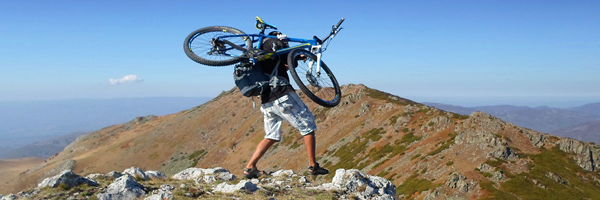
Where to stay
- Just one and a half miles from Hay is Black Mountain View for touring caravans. The park makes a special welcome for tourers and offers all level pitches, on grass, with electrical hookup and digital TV connection;
- Also just a short walk from Hay – and so only a stone’s throw from Back Mountain Activities – is Hay on Wye Caravan Park. Pitches for touring caravans are all on hardstanding and 16 amp electric hook-ups are available on request;
Anglesey Adventures, Anglesey
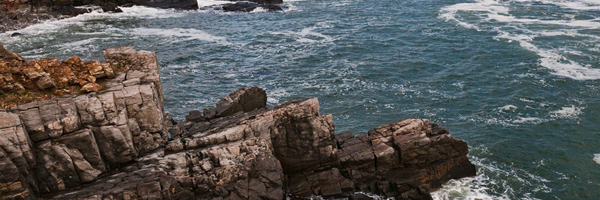
If you venture to this island at the very northwest tip of Wales, you might indulge all of your adventure activity dreams, whether they be rock climbing, coasteering, gorge scrambling and mountaineering, abseiling or kayaking – probably more than enough for even the most hardened of adrenaline junkies.
Anglesey Adventures is based in the island’s main town of Holyhead.
Where to stay
- Pen-y-Llyn Caravan Site to the west of Holyhead, and a 10 minute drive away at Llanfair-yn-Neubwll, this small, low-density touring caravan site is for adults only and offers just five fully serviced pitches;
- Home Farm Holiday Park or Parc Gwyliau to give it its proper Welsh name, is situated on the coast directly east of Holyhead and offers 3 individually named fields for touring caravans (Maes Isaf, Maes Canol and Maes Maes Uchaf) on a mix of hardstanding and grass pitches, many of which are fully serviced;
- Plas Uchaf Caravan and Camping Park, also on the east coast of Anglesey in the small town of Benllech, this site is listed by the Caravan Club and has RAC approval. On a mixture of both hardstanding and grass pitches it offers ample space for a good number of touring caravans.
England
England is not all about lazy days around the village cricket green, messing about in boats or just dozing in your deckchair. You probably don’t need to look very far to discover a far more active world of adventure activities certain to get the adrenaline pumping – whatever your age.
Crags Adventures, Windermere, Lake District
The Lake District, of course, has more than its fair share of adventure activities and from your base at Crags Adventures, in the centre of Windermere, it is possible to join like-minded individuals for climbing tours, canyoning, rappelling, abseiling and many other outdoor activities in these craggy wilds of the country. You can even add to your list of activities one that your friends might not yet have heard of – ghyll scrambling.
Where to stay
- Amongst the countless number of touring caravan sites in the Lake District, Park Cliffe is on the shores of Lake Windermere just a few miles south of the town itself and the base point for Grags Adventures. It is a large park, spread over 25 acres with one area set aside for the 70 pitches for touring caravans, on either grass or hardstanding, but all with electricity hook-ups and mains water supplies;
- Hill of Oaks is an award-winning park with its own mile-long frontage onto Lake Windermere. Pitches available for touring caravans include standard pitches and premium, lakeside pitches. All have electric hookup, with parking space for your car alongside and for your caravan’s awning.
The Midlands
The heart of England is also a place where you can find plenty of adventure activities to satisfy even the thirstiest of adrenaline junkies.
Ultimate Activity Company, Hereford
Although based in Hereford, the Ultimate Activity Company arranges a huge range of adventure activities throughout the Midlands. Fancied your chances as a member of a SWAT team, storming buildings in order to arrest criminals or terrorists? Or maybe you would like to learn how to drive a tank, test yourself with some rock climbing or explore white waters in your canoe for the day? The Ultimate Activity Company arranges all these and more.
Where to stay
- Just five miles from the city of Hereford is Lucksall Caravan and Camping Park, situated in the beautiful Wye Valley. The park extends for 28 acres of mixed woodland and offers a total of 139 flat and closely mown grass pitches, including some on hardstanding, all with a 16 amp electrical hookup;
- Poston Mill Country Holiday Park is only a little further along the Wye in the appropriately named Golden Valley. There is a wide variety of pitches for touring caravans, with tariffs depending on hardstanding or grass and the level of services provided;
- The delightfully named Cuckoo’s Corner Campsite is only a few miles from Hereford. It offers 16 pitches for touring caravans, all on hardstanding and with electric hookup and mains water nearby. It is an adults-only site.
Ackers Adventure, Birmingham
It might be in the heart of the Midlands, but Ackers Adventure Pingu Ski School is open the year round and offers, skiing, snowboarding and tobogganing on its artificial slopes. The ski centre offers facilities for winter sports enthusiasts of all ages, but makes a special effort to encourage younger, fledgling skiers.
Where to stay
- In the Wythall district of Birmingham, the Chapel Lane Caravan Club Site has the twin benefits of being close to the city yet also enjoying a rural setting. Its 117 pitches for touring caravans include 85 that are on hardstanding;
- Just a stone’s throw from the city itself, in the suburb of Sutton Coldfield you will find Marsten Caravan Park. Since it is in the very heart of England, the site is easily accessible from any direction and offers both hardstanding and grass pitches for touring caravans, with the option of those with an electric hookup;
- An adult’s only caravan site, in the Forest of Arden between Coventry and Birmingham, may be found at Somers Wood Caravan Park. The site offers a total of 48 pitches for touring caravans, all with 10 amp electric hookup, with some on hardstanding and the remainder on grass.
Southwest England
With just a shade under 300 miles of coastline, it probably comes as no surprise that the southwest’s Duchy of Cornwall packs in a host of sea and water-related adventure activities. Here are just two of them.
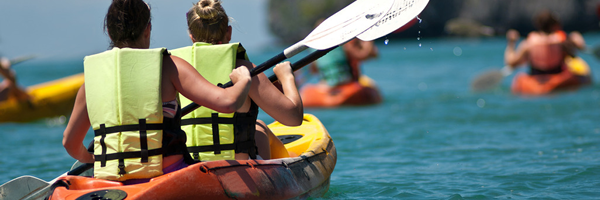
Coasteering combines wild sea swimming with scrambling over the rugged rocks and taking a plunge into the waters below when your route on land becomes impassable. Cornish Coasteering is based near Polzeath on the road to Wadebridge on the north Cornish coast.
Where to stay
- The obvious choice to stay when you are visiting Cornish Coasteering is the latter’s base at Dinham Farm Camping and Caravans. Near the beach at Polzeath, the site offers easy access to the two principal stretches of coastline used by Cornish Coasteering and gives visiting touring caravans the option of an electric hookup;
- Also close (200 yards or so) to the beach at Polzeath is one of the oldest campsites in Cornwall – Valley Caravan Park, which first opened in 1945. Today, it offers a variety of pitches with varying levels of service for touring caravans, tents and motorhomes.
Vertical Descents, St. Ives, Cornwall
Vertical Descents in Cornwall offer a range of land and sea-based activities including surfing and eco-coasteering, power kiting and kite buggying.

Where to stay
- Polmanter Touring Park is within walking distance of St Ives and caters for touring caravans, tents and motorhomes. There are non-serviced grass pitches, hardstanding serviced pitches, multi-serviced grass pitches and multi-serviced hardstanding pitches;
- Trevalgan Touring Park is only two miles away from St Ives, nestling between the green fields of open farmland. More than 130 pitches are offered, with some having basic services, some multi-serviced and others with no services supplied;
- Higher Penderleath Caravan & Camping Park the coast as well as unspoiled countryside. Pitches for caravans, tents and motorhomes are all on grass and electric hook-ups may be available.
Southern England
One of the attractions of southern England, of course, is that it is likely to offer longer hours of summer daylight – not to mention the sun – to help you stay warm during whatever adventure activities you choose to pursue.
Go Ape Wendover Woods, near Aylesbury, Buckinghamshire
Choose a scrambling net or climbing wall to reach the treetops of this airy adventure land and take in the views over the unspoilt landscape of Aylesbury Vale before negotiating the high ropes crossings, tree-top high wires and down to the ground zip wires.
Where to stay
- In the Chiltern Hills about 15 miles from Aylesbury you can find Home Farm Camping and Caravan Site. It offers up to 12 pitches for touring caravans, 5 of which are on hardstanding and electric hook-ups are also available;
- 26 miles south of Aylesbury, on the River Thames at Maidenhead, there is Amerden Caravan and Camping Park. If your adventures at Go Ape Wendover Woods have given you a hearty appetite, you might be reassured that this caravan site is within walking distance of the village of Bray and its famous restaurants. Touring caravan pitches are on grass and come with or without electric hookup.
Touring abroad: what UK caravan owners need to know about insurance for European trips
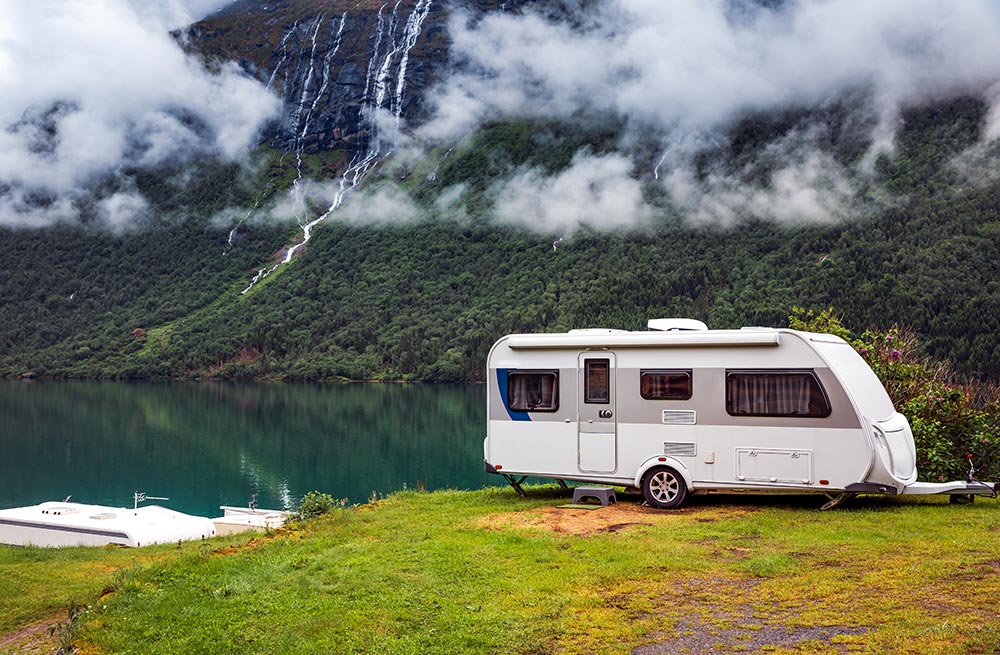
With the holiday season coming up, you might want to hitch up your caravan, take it across the Channel, and enjoy the festive sights and sounds to be found in countless towns and villages across the continent. Our winter caravanning guide has tips to help you enjoy trips even when there’s a chill in the air.
So that everything goes smoothly, it’s worth a moment or two of homework to check that all your insurance and other documents are in good order for the trip.
European cover: check your policy first
These days, it might be easy to take for granted that your regular caravan insurance includes European cover as a standard feature. But that is not the case. Not all motor and caravan insurance policies extend cover to driving in Europe. So, check that you do, indeed, have that cover – you will need it! (At Cover4Caravans, our touring caravan insurance includes continental cover up to a maximum 240 days).
Bear in mind, too, that whatever your policy, there are typically limits on the duration of any trip, along with potential restrictions on the countries or destinations covered. So, make sure you have the necessary territorial cover before confirming ferry, accommodation, or camping site bookings.
Documents and post-Brexit requirements
In the same way that you might have taken for granted cover throughout Europe, you might also have grown accustomed to the fact that a so-called “Green Card” (proof of the relevant motor insurance) has been dropped by most European countries.
As the Motor Insurers Bureau (MIB) advises, a Green Card system is still used in countries including Albania, Azerbaijan, Moldova, Morocco, North Macedonia, Tunisia, Turkey, and Ukraine – but all of these now accept a digital version of the required proof of third-party insurance.
Wherever you are driving in Europe, therefore, typically you will still need to keep with you your certificate of insurance (and Green Card if necessary), passports, your driving licence, and V5C (or logbook as it’s also known).
Check with authoritative sites such as the RAC or AA about any further, specific safety equipment or driving accessories that might be required in specific countries. Give a final glance at the government’s official Foreign Travel Advice for any warnings about visits to the countries on your itinerary.
Theft, damage and security expectations
Whenever you are out and about with your caravan – here at home or abroad – remember that your insurer assumes the right to expect the trailer to remain under your control and that you take “reasonable care” to ensure its security and safeguard against any theft or damage.
What does that mean in practice? It means that you cannot simply pitch up at your campsite, leave the trailer there, and go off exploring for the next few days, staying at different accommodation for example. If your ‘van is left unattended overnight and loss or damage occurs (because of storms, vandalism, theft, or a break-in, for example), your insurer may be entitled to dismiss any claim on the grounds that you failed to adequately protect your caravan.
Conclusion
In short and with just a little preparation, there is nothing to put you off enjoying a winter break with your caravan across the Channel somewhere in Europe. Simply review your motor and caravan insurance cover, take the right documentation, and if you are unsure about any European travel requirements, ask your insurance provider.
Destination guides
Guide to caravanning in France
Guide to caravanning in the Channel Islands
Guide to caravanning in Germany
Swift tourer relaunches, the AA nominates best campsite, and other UK caravan news

Welcome to this month’s round up of the latest news from the UK caravanning world.
From major manufacturer announcements to campsite award winners, there’s plenty happening as the new season approaches. Swift has relaunched two of its most recognisable tourer ranges, while some of the country’s top sites have been recognised for excellence in the year ahead. We also take a look at the latest caravan design accolades from the Caravan and Motorhome Club. Here’s what’s new …
Swift relaunches the iconic Conqueror & Conqueror Grande tourer ranges
Swift announced on the 14th of November a relaunch for 2026 of its most popular marques, the Conqueror and the Conqueror Grande.
With all the home from home comforts you can tow to your favourite campsite, the Conquerors are very much a family-oriented caravan – that’s what helps to make them so popular. Models for the coming year feature such luxuries as a solar panel on the roof, outside BBQ connection, Duvalay Duvalite mattresses, and a fully equipped kitchen including a 133-litre fridge and 12-litre freezer.
The Conqueror range features three distinctive models – a single-axle 2-berth, a single-axle 4-berth, and a twin-axle 4-berth. All come with front parallel seating and a side kitchen, while the 4-berth models also have a transverse island bed and end washroom.
There are four enhanced layouts in the Conqueror Grande range – 2 single-axle and two twin-axle, all offering four berths. They feature either L-shaped or front parallel seating, side or mid-caravan kitchens, and combinations of rear transverse and end island wash or bedrooms.
St Helens in the Park is crowned AA’s overall campsite of the year
Planning a trip to North Yorkshire? You might want to book your pitch at the best campsite in the UK!
A story in the 7th of November edition of the Independent newspaper revealed that St Helens in the Park, located in Wykeham, North Yorkshire, has been awarded the AA’s top prize as the best overall campsite for 2025.
St Helens in the Park – also handily situated for Scarborough – occupies thirty-six acres of landscaped grounds with areas carefully screened by mature trees that offer more private and intimate space for adults-only parts of the site.
Winners of the Camping and Glamping Awards 2025 announced
The Eastern Daily Press announced the winners of the Camping & Glamping Awards for 2025, selected by the website campsites.co.uk. These highlight the best campsites, glampsites, and caravan parks in the UK.
The awards go to show that Norfolk is one of the UK’s strongest regions for camping, caravanning, and glamping. The county walked away with no fewer than three of the very top awards – having scored most highly on the guest experience offered, the onsite facilities, a natural location, the quality of the service provided, and the overall standard of accommodation.
Other winners in the 2025 season include:
- Watermouth Valley Camping Park, North Devon — the Best Campsite across the UK as a whole;
- Tregarton Park, Cornwall — winner of Best Caravan Park;
- Carrock Glamping Pods, Lake District — Best Glamping Site;
- Plassey Holiday Park, North Wales — Best Family Campsite; and
- Cosmos Camping, South Wales — Best Adult-Only Site.
Elddis and Buccaneer win two prestigious titles in the annual Caravan and Motorhome Club Caravan Design Awards
So much for the best caravan and camping sites, you also want to know which have been judged the best caravans.
Here, the best in caravan Design Awards – as recognised by the Caravan and Motorhome Club – went to Elddis and Buccaneer.
The best in design, practicality, and innovation was judged according to several rigorous standards, including:
- internal layout and comfort;
- serviceability and storage;
- washroom and kitchen layout and design;
- security, safety, and electrics; and
- quality of manufacturing and warranty.

